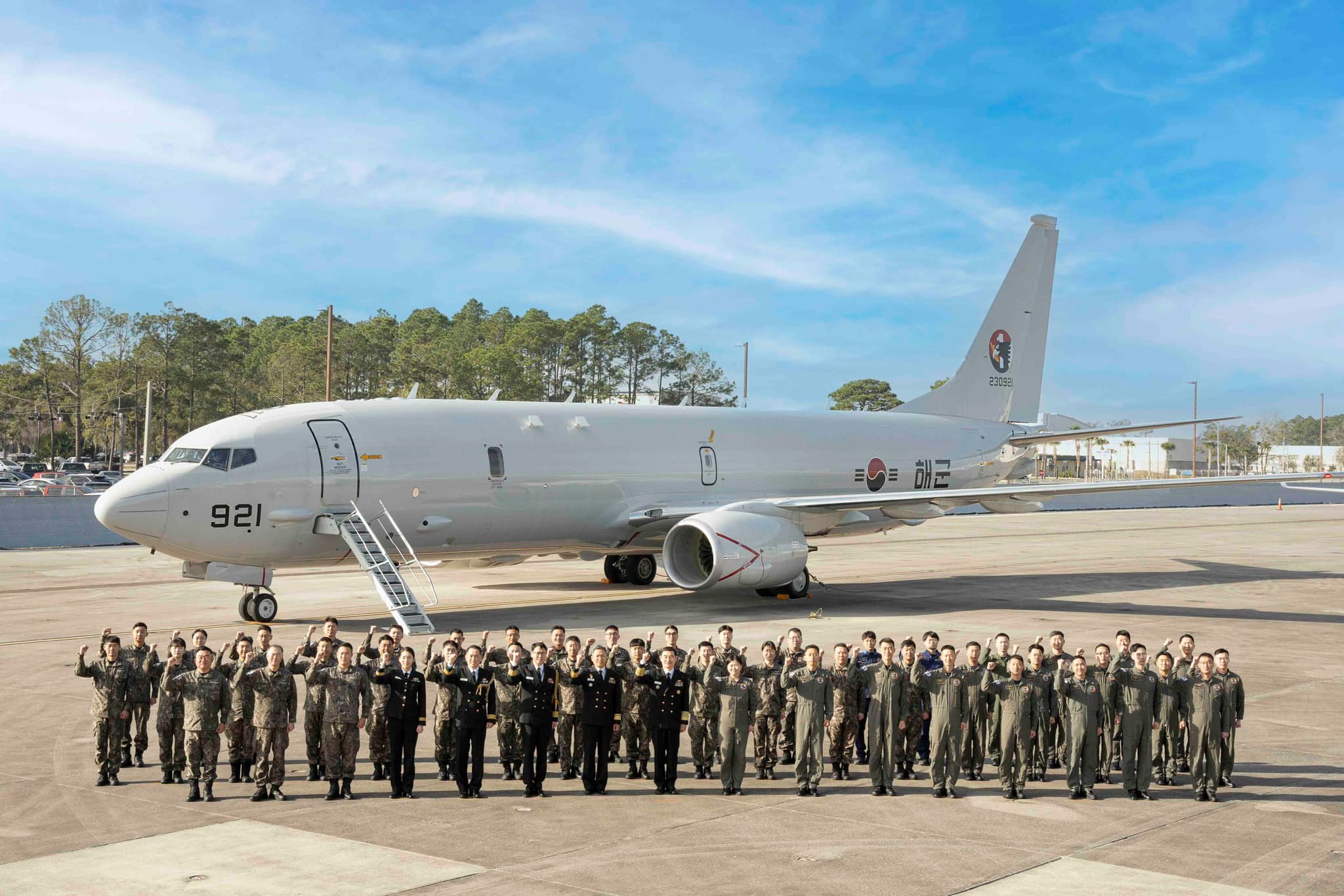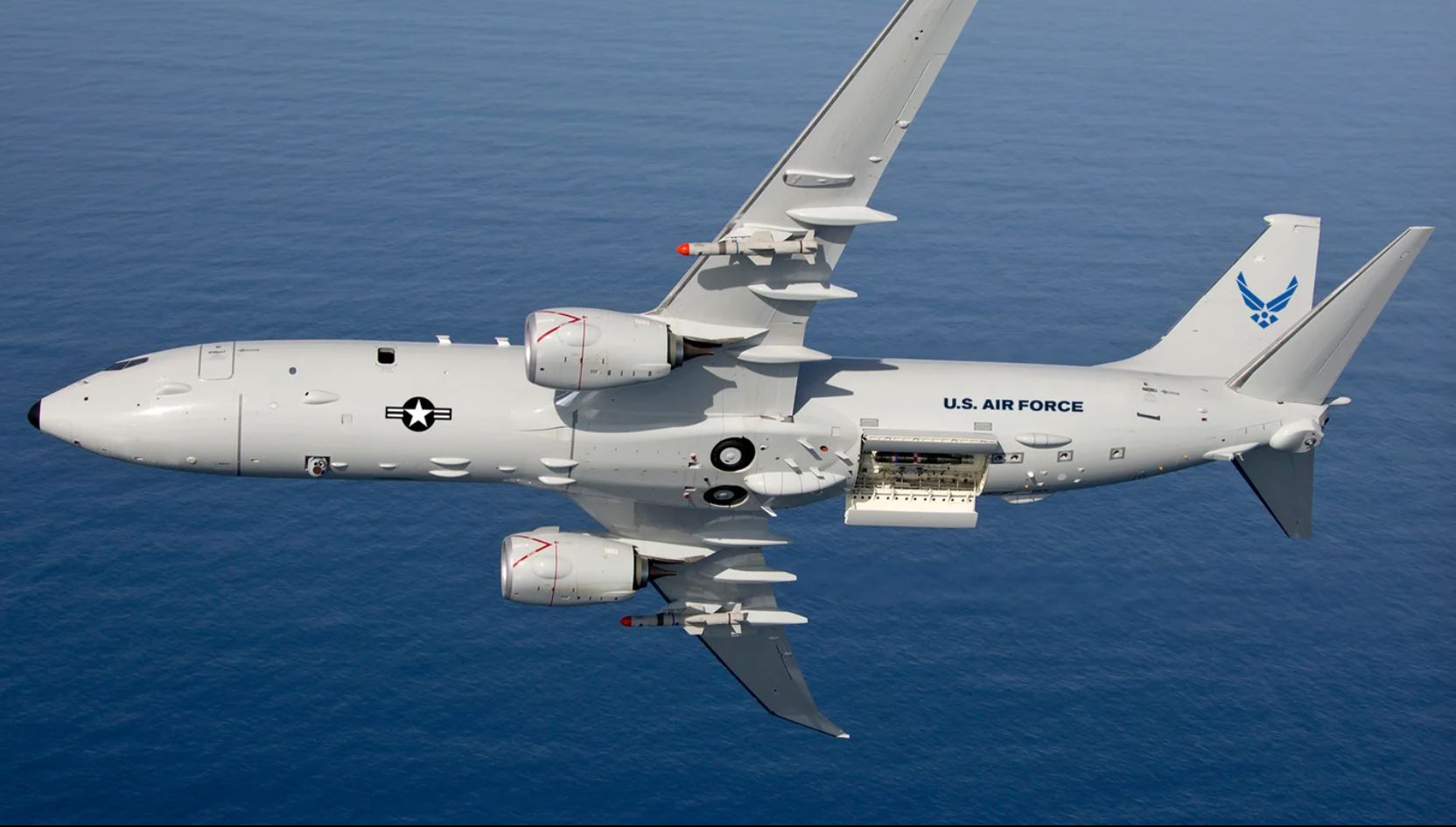The South Korean Navy has completed the acquisition of six P-8A Poseidon maritime surveillance aircraft from the United States as the Chinese PLA Navy continues to expand its presence in the Indo-Pacific dangerously.
The milestone was celebrated with a ceremony on July 4 at the Naval Aviation Command in Pohang, North Gyeongsang Province.
The completion of this acquisition marks nearly six years since South Korea’s state military acquisition agency initiated the project to purchase the aircraft from Boeing through a government-to-government “foreign military sale” program.
The first three aircraft arrived in South Korea on June 19, followed by the remaining three on June 30. These advanced P-8A Poseidons will replace the Navy’s aging P-3 fleet.
Defense Minister Shin Won-sik, Chief of Naval Operations Adm. Yang Yong-mo, and other key defense and regional officials attended the ceremony.

Minister Shin emphasized the transformative impact of the new fleet on South Korea’s maritime defense strategy, particularly in deterring North Korean provocations.
“The P-8A Poseidon will turn the enemy’s submarine into a fish in a fishbowl. The sea will become a hell for enemy submarines,” Minister Shin declared in his address.
Nicknamed the “submarine killer,” the P-8A Poseidon is renowned for its versatility and advanced capabilities, including anti-submarine, anti-surface, intelligence, surveillance, and reconnaissance operations.
Rear Adm. Ha Sung-wook, head of the Naval Air Command, highlighted the aircraft’s role in enhancing South Korea’s security readiness. “The P-8A will substantially contribute to the security readiness of the Republic of Korea as a core asset that will neutralize enemy submarines and as a steadfast pillar of the maritime-based three-pronged deterrence system,” Rear Adm. Ha said.
The Navy intends to deploy the P-8A Poseidon fleet next year after a year of training and evaluation to ensure its operational readiness.
South Korean personnel have already undergone 16 months of intensive training in the United States to prepare for this deployment. Following the ceremony, Defense Minister Shin ordered the inaugural flight of the P-8A, piloted by Lieutenant Commander Lee Seong-hee.
P-8 Poseidon To Hunt Chinese Submarines
The multi-mission maritime patrol aircraft, the P-8A Poseidon, is designed for various roles, including anti-submarine and anti-surface warfare, shipping interdiction, intelligence, surveillance, and reconnaissance missions, as well as search and rescue operations.
The Poseidon’s primary strength lies in its sophisticated array of sensors. It features an APY-10 multi-mode synthetic aperture radar capable of tracking ships from hundreds of miles away and spotting submarine periscopes with high resolution.
This radar can even identify different classes of ships. For shorter-range searches, the MX-20 electro-optical/infrared turret is employed. The ALQ-240 Electronic Support Measure (ESM), adapted from the EA-18G Growler, serves as an electromagnetic sensor to track radar emitters.
Boeing Defense tweeted about South Korea’s induction into the group of P-8 operators. It welcomed the nation to the eight global customers benefitting from the aircraft’s unparalleled multi-mission maritime patrol capabilities.
The company also shared a video documenting the production journey of a South Korean P-8A. In addition to South Korea and the United States, India, Australia, Norway, New Zealand, Canada, Germany, and the United Kingdom operate the P-8 Poseidon.
Welcome to the #P8 family, Republic of Korea Navy! 🎉
The ROK Navy commemorated the delivery of six Poseidon aircraft today. Korea joins eight global customers that have selected or already operate the P-8 and benefit from its unmatched, multi-mission maritime patrol capability.… pic.twitter.com/UoJZRbgwd1
— Boeing Defense (@BoeingDefense) July 4, 2024
Specifically, India and Australia each operate around 12 P-8s, with Australia having two more on order. New Zealand operates four P-8As, Norway has five, and the United Kingdom operates nine. Canada and Germany have also placed orders for 12 and eight P-8As, respectively, with deliveries expected in the coming years.
Due to escalating tensions with China, the P-8A Poseidon is expected to play a critical role in the Indo-Pacific region. China views the aircraft as a key threat to its submarine operations.
In December 2015, the US reached an agreement with Singapore, allowing P-8 aircraft to be based in the island city-state, which aggravated Beijing.
The latest induction of P-8As in the South Korean Navy follows closely on the heels of China accusing the US of deploying a submarine detector via a P-8A Poseidon in the disputed South China Sea, underscoring the aircraft’s strategic significance in regional maritime security.
Chinese submarines in the region now face a persistent and significant threat, as South Korea, Australia, India, and the US all operate the Posiedons.
Also, China’s anxiety about the P-8A’s growing presence is evident. Last year, the flight of a US Navy P-8A Poseidon over the Taiwan Strait on July 13 prompted China to launch 26 combat aircraft in response.

A notable incident occurred on August 19, 2014, when a Chinese J-11 fighter flew within thirty feet of a P-8 flying more than 130 miles east of Hainan Island, even performing a barrel roll over the aircraft’s nose. This led to another diplomatic confrontation between Washington and Beijing.
Even India has extensively used the aircraft not only in the Indian Ocean but also over the near volatile India-China border during the Dokalam confrontation. The Indian chief was very impressed with its capabilities.
Gen. Bipin Rawat said, “I came to know about the (great) capabilities of the P-8I anti-submarine warfare planes after they were deployed in Doklam for surveillance.” The plane was also used during the 2019 Pulwama attack aftermath to monitor Pakistani army movements.
The P-8 Poseidon’s multifaceted capabilities, combined with its widespread use by several nations, particularly in the strategically important Indo-Pacific region, underscore its critical role in modern maritime defense and the ongoing power dynamics in these contested waters.
- Contact the author at ashishmichel(at)gmail.com
- Follow EurAsian Times on Google News




